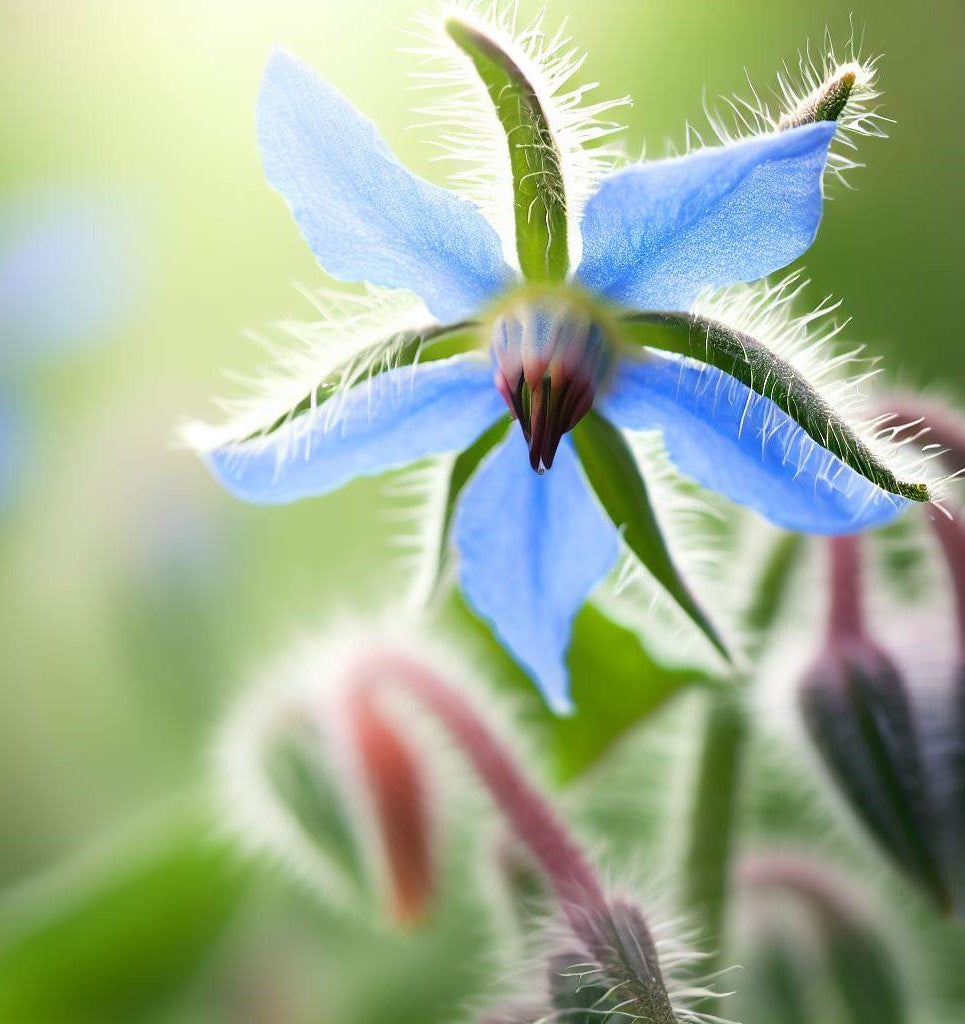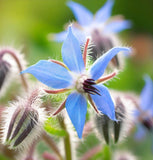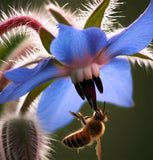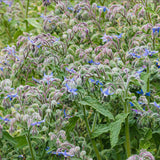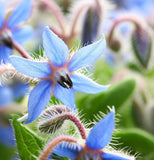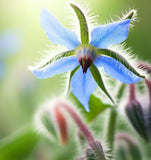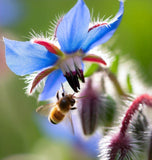Borage (Borago officials)
Borage (Borago officials) is an herbaceous annual plant that is native to the Mediterranean region. It belongs to the Boraginaceae family and is well-known for its vibrant blue flowers and culinary uses. Borage is a bushy plant that grows to a height of about 2 to 3 feet (0.6 to 0.9 meters). It has hairy, alternate leaves that are rough in texture and oval or lance-shaped in form. The leaves are bright green in color and can grow to be quite large.
Flowers: Borage is particularly admired for its stunning star-shaped flowers. The flowers are predominantly blue, although they can also be pink or white. They have five petals and are arranged in loose clusters at the top of the stems. Borage flowers are known for attracting bees and other pollinators to the garden.
Culinary Uses: Borage is popular in culinary traditions, and its leaves and flowers are edible. The leaves have a slightly cucumber-like flavor, while the flowers have a sweeter taste. Both the leaves and flowers can be used in salads, soups, and beverages. Borage is often used as a garnish for drinks like cocktails or lemonade. Additionally, the flowers can be frozen in ice cubes for an attractive touch.
Medicinal Uses: Borage has a history of medicinal use. Its leaves contain gamma-linolenic acid (GLA), an omega-6 fatty acid that is believed to have anti-inflammatory properties. Borage oil, extracted from the seeds, is sometimes used as a dietary supplement for its potential health benefits. However, it is essential to consult with a healthcare professional before using borage or its oil for medicinal purposes.
Garden Cultivation: Borage is a relatively easy plant to grow, making it a popular choice for herb gardens and ornamental beds. It thrives in full sun to partial shade and prefers well-drained soil. Borage can self-seed and spread easily, so it's important to control its growth if you don't want it to take over the garden. The plant has a deep taproot, so it's best to sow the seeds directly in the ground as it doesn't transplant well.
Other Uses: Borage is known for its ability to attract beneficial insects to the garden, such as bees and predatory insects that can help control pest populations. Some gardeners also use borage as a companion plant to improve the health and flavor of neighboring plants, such as tomatoes.
It's worth noting that while borage is generally considered safe for consumption in moderate amounts, pregnant or breastfeeding women should avoid its use due to potential effects on pregnancy and lactation. As with any edible plant, it's advisable to ensure its suitability and consult with a healthcare professional if you have any concerns.
Botanical name : Borago officials
Common name : Borage
Life cycle : Annual
Days to maturity : 50-60
Light requirement : Full sun
Planting time : Spring/Summer
Sowing method : Direct sow
Planting depth : ¼”- ½”
Plant spacing : 18”- 24”
Ships : Year-round
Average seed per ounce : Approx. 1,200





